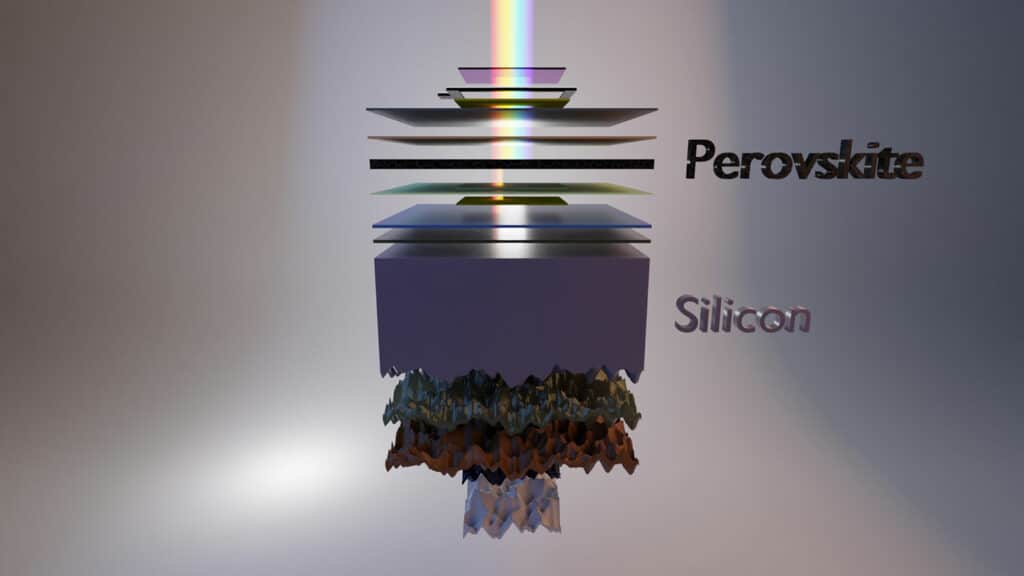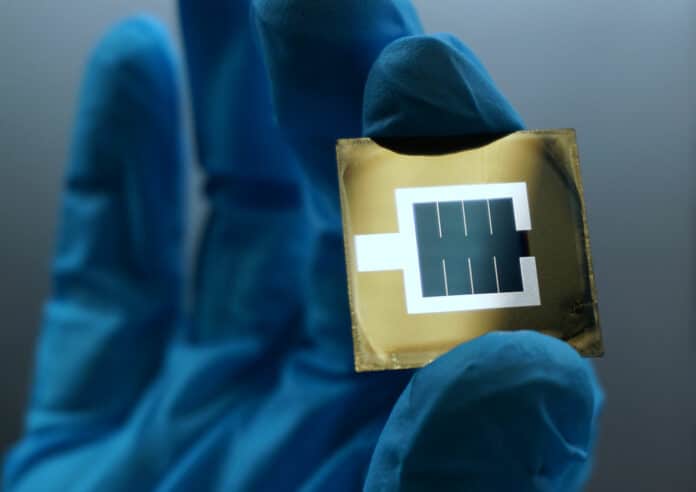Silicon has long dominated the solar cell industry thanks to its efficiency, durability, cost, and ease of manufacture. Meanwhile, perovskite is quickly emerging as an alternative that holds promise for creating lightweight, inexpensive solar panels. But when the two materials team up – they work very well together, absorbing different wavelengths of light. Silicon excels at red and infrared light, while perovskite taps into blue light better. This means that tandem silicon-perovskite solar cells are more efficient than either material alone.
This formidable duo in the world of solar cells has now hit a new record of efficiency. Researchers at Helmholtz Zentrum Berlin (HZB) have developed a tandem solar cell with an efficiency of over 32%.
The new device consists of a bottom cell made of several thin layers of silicon and a top cell made of perovskite layers. While the top cell can utilize blue light components, the bottom cell converts the red and near-infrared components of the spectrum. Different thin layers help to optimally utilize the light and minimize electrical losses.

The team used an advanced perovskite composition with a very smart interface and optical modifications that enabled the highest photovoltages (open-circuit voltage) and resulted in the new record efficiency for this fascinating tandem technology.
The resulting perovskite-silicon tandem solar cell converts record 32.5% of the incident solar radiation into electrical energy. The certifying institute European Solar Test Installation (ESTI) in Italy measured the tandem cell and officially confirmed this value which is also included in the NREL chart of solar cell technologies maintained by the National Renewable Energy Lab (NREL), USA.
Various teams from HZB achieved a record value in late 2021 with an efficiency of 29.8%, which was realized by periodic nanotextures. In the Summer of 2022, the EPFL first reported a certified tandem cell above the 30% barrier at 31.3%. The record is again back at HZB with the new certified value of 32.5%, which is a remarkable efficiency jump over the previous record holder.
“At 32.5%, the solar cell efficiency of the HZB tandems is now in ranges previously only achieved by expensive III/V semiconductors. The NREL graph clearly shows how spectacular the last two increases from EPFL and HZB really are,” said HZB’s scientific director, Prof. Bernd Rech.
